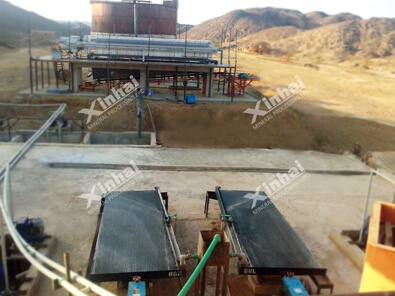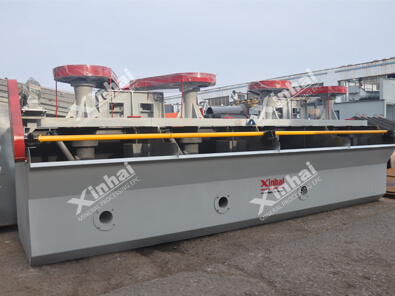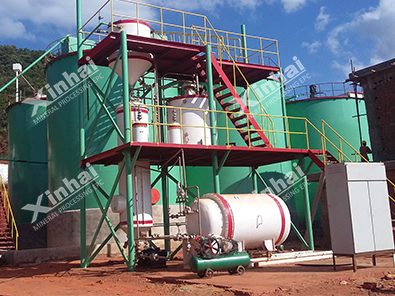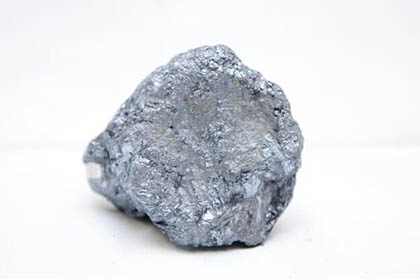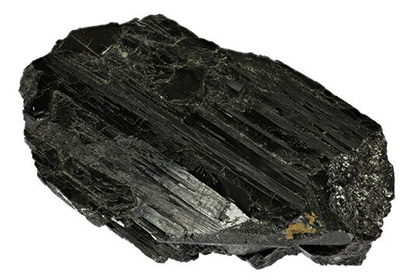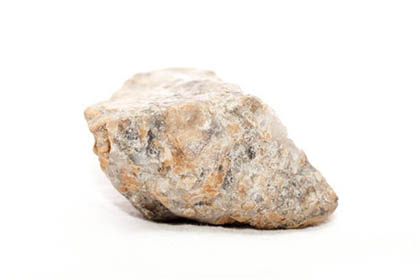5 Kinds of Gold Processing Methods
 Sheena
Sheena
 Oct 16, 2024
Oct 16, 2024
 1408
1408
If you want to know more details about equipment, solutions, etc, please click the button below for free consultation, or leave your requirements!
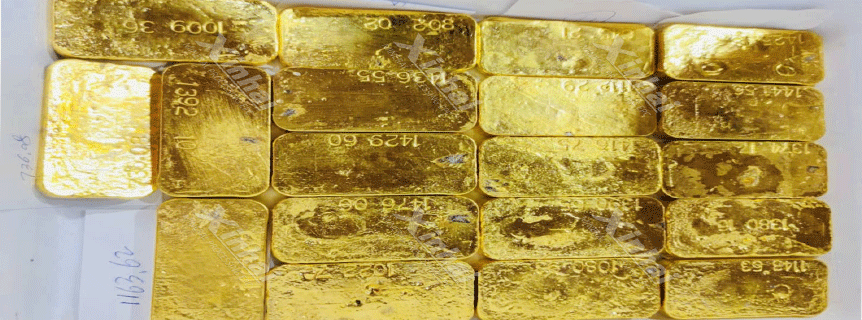
Gold-bar-production-on-site
To extract gold from ore, various methods are employed, each suited to different types of ore and scales of production. The primary goal of gold processing is to efficiently and economically recover gold from its host materials while minimizing environmental impact. This passage will explore the most common gold processing methods used in modern mining and refining operations.
01Gravity Separation
Back
Gravity separation is one of the oldest and simplest methods used for gold recovery. This method takes advantage of gold’s high density compared to the surrounding minerals. Gravity-based methods are often used to recover coarse gold particles from ore and include:
1. Panning
Panning is a traditional method, commonly used by artisanal miners. The ore is placed in a shallow pan with water and gently agitated. Gold particles, due to their density, sink to the bottom while lighter materials are washed away. Though effective for small-scale operations or exploration, panning is not suitable for large-scale gold mining due to its manual nature and limited recovery rates.
2. Shaking Tables
Shaking tables are more sophisticated and used in both small- and medium-scale operations. These tables create a stratification effect through vibrations, which separate heavier gold from lighter minerals. As water flows over the table, gold particles settle into grooves and are collected at the end. This method works well for free-milling gold and is more efficient than panning.
3. Centrifugal Concentrators
Centrifugal concentrators use high-speed rotation to enhance the effects of gravity. These devices create strong centrifugal forces, which force heavier particles, such as gold, to settle while lighter materials are washed away. This technique is highly efficient for recovering fine gold particles and is often used in combination with other methods to maximize recovery.
02Flotation
BackFlotation is a chemical method used to separate gold from sulfide minerals or other impurities that are not removed by gravity separation. This method is particularly effective for processing low-grade ores or ores containing gold locked within sulfide minerals, such as pyrite or arsenopyrite.
In flotation, the ore is ground into fine particles and mixed with water to form a slurry. Chemical reagents, called collectors, are then added to the slurry to make the gold-containing sulfides hydrophobic, or water-repellent. When air bubbles are introduced into the slurry, the hydrophobic gold-sulfide particles attach to the bubbles and float to the surface, forming a froth. The froth, which contains the gold, is skimmed off and sent for further processing.
Flotation is highly effective, particularly in gold-copper ore processing, and is often used in combination with gravity separation or cyanidation to maximize gold recovery.
03Cyanidation (Leaching)
BackCyanidation, also known as leaching, is the most widely used method for extracting gold from ore on an industrial scale. This method is especially effective for processing both low-grade and high-grade gold ores.
1. Heap Leaching
Heap leaching is typically used for low-grade ores or tailings. The process involves stacking crushed ore onto large pads and sprinkling a cyanide solution over the heap. The cyanide solution percolates through the heap, dissolving the gold as it moves downward. The gold-laden solution, known as the pregnant leach solution, is then collected at the base and processed to recover the gold.
Heap leaching is cost-effective due to its simplicity and the ability to process large volumes of ore with minimal energy and infrastructure requirements. However, the recovery rates for heap leaching are lower compared to other methods, and the process can take months to extract gold from a single heap.
2. Agitated Leaching (Tank Leaching)
Agitated leaching, or tank leaching, is used for higher-grade ores or ores that are finely ground. In this method, the ore is ground into a fine powder and placed in large tanks where a cyanide solution is added. The tanks are mechanically agitated, and the cyanide dissolves the gold, forming a gold-cyanide complex. Activated carbon is often introduced into the tanks, which adsorbs the dissolved gold from the solution.
Once the gold is adsorbed onto the carbon, it is separated from the slurry and subjected to further processing to recover the metal. Agitated leaching is faster and more efficient than heap leaching and is widely used in large-scale gold mining operations.
04Carbon-in-Pulp (CIP) and Carbon-in-Leach (CIL)
BackCarbon-in-pulp (CIP) and carbon-in-leach (CIL) are two similar processes used in gold recovery after cyanidation. These methods improve the efficiency of gold recovery and are often employed in large-scale mining operations.
1. Carbon-in-Pulp (CIP)
In the CIP process, after the gold is dissolved in cyanide, the solution is passed through tanks containing activated carbon. The carbon adsorbs the gold, removing it from the solution. The loaded carbon is then separated from the slurry, and gold is stripped from the carbon using a hot caustic solution. The stripped carbon can be reused, and the gold is recovered from the solution by electrolysis or precipitation.
2. Carbon-in-Leach (CIL)
In the CIL process, the activated carbon is added directly to the leach tanks, where cyanide is dissolving the gold. As the gold is dissolved, it is simultaneously adsorbed onto the carbon, streamlining the process by combining the leaching and adsorption stages. Like CIP, the loaded carbon is later stripped of the gold, and the gold is recovered.
CIL and CIP are commonly used in conjunction with agitated leaching, particularly for ores that have fine gold particles.
05Smelting and Refining
BackOnce gold is recovered from the ore, it must be purified to achieve the desired level of purity. This is typically done through smelting and refining processes.
1. Smelting
In smelting, gold is heated to high temperatures (over 1,000°C) in a furnace along with fluxes, which help to remove impurities. The molten gold settles at the bottom of the furnace, while impurities float to the top as slag and are removed. The smelted gold is then poured into molds to form ingots or bars.
2. Refining
For further purification, the gold undergoes refining, often through the Wohlwill process or Miller process. The Wohlwill process uses electrolysis to achieve purity levels of up to 99.999%, while the Miller process uses chlorine gas to remove impurities, achieving 99.5% purity. Refining ensures that the final product is free from any remaining contaminants.
06Environmental and Safety Considerations
BackGold processing can have significant environmental impacts, particularly through the use of toxic chemicals like cyanide and mercury, which have been used in artisanal and small-scale mining. Modern gold processing methods focus on reducing these impacts by:
1. Recycling cyanide: Large-scale operations often recycle cyanide to minimize its environmental impact.
2. Tailings management: Proper containment and management of tailings (the waste produced from processing) reduce the risk of environmental contamination.
3. Mercury-free processing: In small-scale and artisanal mining, there is a growing movement toward using mercury-free gold processing methods, such as gravity separation or borax smelting.
In addition to environmental concerns, modern gold processing plants prioritize worker safety by implementing rigorous safety protocols and using protective equipment to minimize exposure to hazardous materials.
07Conclusion
BackGold processing methods have evolved over centuries, driven by technological advances and a focus on efficiency and environmental responsibility. Whether through gravity separation, flotation, cyanidation, or refining, each method is tailored to the specific characteristics of the ore being processed. As gold continues to be a highly valuable resource, these methods remain critical in ensuring that it can be extracted and purified effectively while minimizing the impact on the environment.
 +86 18716000713
+86 18716000713 xlyin@xinhaimining.net
xlyin@xinhaimining.net




 Message
Message Chat Now
Chat Now


